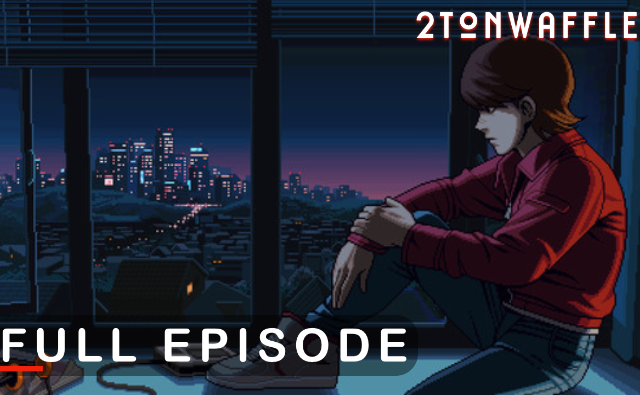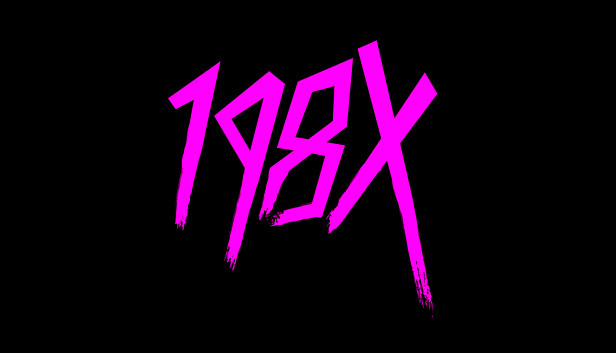The First Two Hours: 198X Review - When Nostalgia Can't Save Poor Game Design
198X nails 80s nostalgia with gorgeous pixel art and authentic atmosphere, but forces players through brutal arcade sections with no skip option. Great story trapped behind hostile design that respects quarters over player time. 3/5 stars for wasted potential.

TL;DR
Good evening, everybody! Welcome back to another edition of The First Two Hours, where I dive headfirst into my ever-growing Steam backlog and see what gems or disasters I can uncover. I'm Josh Bailey, and tonight we're taking a trip back to 1986, quite literally. The game's called "198X," and boy, do I have some thoughts about this one.
Before we dive in, quick housekeeping: if you haven't checked out the Indie Basement community yet, what are you waiting for? We're bridging the gap between indie game discovery and content creation, and I'd love to have you join us over at indiebasement.com. Also, shoutout to Guilded. Seriously, ten channel types without third-party bots? That's what I'm talking about. Discord could learn a thing or two, but I digress.

First Impressions: The Good Stuff
Let me start with what 198X gets absolutely right, because there's genuinely good stuff here that deserves recognition. The opening hit me like a nostalgic freight train in the best possible way. We start with a classic side-scrolling beat-em-up that immediately reminded me of those golden Teenage Mutant Ninja Turtles arcade cabinets. You know the ones where you'd pump quarters like your life depended on it while some kid next to you hogged Leonardo.
The fighting mechanics feel authentic to that era. Your character has limited reach, enemies swarm you from both sides, and timing is everything. There's something beautifully pure about picking up a baseball bat and going to town on pixelated thugs. The unlimited continues feature is a nice touch too. Nobody wants to restart from scratch because they couldn't master the art of the side-step punch combo.
But here's where 198X really shines: the atmosphere. Holy cow, the developers nailed that 80s cinematic feel. The music alone deserves a standing ovation. It's got that synth-heavy, neon-soaked vibe that makes you want to throw on a Members Only jacket and drive a Trans Am into the sunset. The visual presentation screams quality indie development. This isn't lazy pixel art; this is deliberate, crafted nostalgia.
The Story Hook: Promising Start
The narrative setup genuinely had me invested. You play as "Kid" (yes, that's literally the character's name, which honestly fits the coming-of-age vibe perfectly). The opening monologue about suburban teenage ennui hit different. "There I was, just every other night, counting taillights on the highway." Man, that line transported me back to being seventeen and convinced that nothing exciting would ever happen in my sleepy hometown.
The cinematic presentation deserves major props. Those long, contemplative pauses between scenes? The sweeping camera movements through suburban landscapes? It's like the developers studied every John Hughes film and distilled the essence into interactive form. You can practically smell the cigarette smoke and hear the distant sound of Duran Duran echoing through mall corridors.
When Kid discovers the underground arcade (described as a basement thick with cigarette smoke and "10,000 volts of energy"), I was completely sold. The description of "an army of high tech creatures with huge crystal clear screens" perfectly captures that almost mystical awe kids felt walking into proper arcades back in the day. These places weren't just entertainment venues; they were portals to other dimensions where the cool outcasts gathered.
The Technical Presentation: Mixed Bag
Let's talk graphics. The pixel art style works beautifully for the story sequences and the fighting game portions. It's that sweet spot between 8-bit and 16-bit aesthetics that modern indie developers have mastered. Characters have personality despite limited animation frames, and the background details create authentic period atmosphere.
However (and this is where things get dicey), the options menu is practically nonexistent. Subtitles toggle and language selection. That's it. No controller configuration, no audio mixing, no video settings. For a game trying to recreate the arcade experience, the lack of control customization feels like a missed opportunity. Some of us have evolved beyond the standard WASD setup, you know?
The Linux compatibility through Steam's experimental features worked flawlessly, which honestly surprised me. Too many indie titles still struggle with cross-platform functionality, so credit where it's due.
Where Everything Falls Apart: The Forced Arcade Experience
Here's where I need to put on my serious reviewer hat, because this next part genuinely frustrated me. After that beautiful narrative setup, after getting invested in Kid's journey of discovery, the game commits what I consider a cardinal sin of game design: it forces you to complete an entire arcade minigame with no option to skip, quit, or bypass.
Let me be crystal clear about what happens. You walk up to a side-scrolling shooter (think Gradius or R-Type) and the game essentially puts a gun to your head and says, "You WILL complete this, or you see nothing else." No escape key functionality. No pause-and-quit option. No "your character walks away from the machine" choice. Nothing.
I spent twenty minutes (twenty minutes!) dying repeatedly on this shooter because, let's be honest, I'm terrible at those games. Always have been. My fingers aren't what they used to be (three games of bowling earlier that day didn't help), and precision bullet-hell navigation has never been my strong suit. But the game doesn't care about your skill level or preferences. It demands completion.
This design choice baffles me on multiple levels. First, it breaks immersion completely. In real life, if you're getting destroyed by an arcade cabinet, you walk away. You don't stand there feeding quarters into a machine for hours. Second, it disrespects the player's time and agency. Some of us are here for the story, not to prove our worth against space debris and geometric enemy patterns.
The Bigger Design Philosophy Problem
But here's the thing that really gets me: this forced completion mechanic undermines everything great about the game's setup. The story is about choice, about a kid discovering new worlds and possibilities. Yet the gameplay removes all choice from the player. It's thematically contradictory and practically frustrating.
Good game design gives players options. Maybe you're not great at shooters but you appreciate the narrative. Maybe you've got limited gaming time and want to experience the story without grinding through arcade sequences. Maybe you're reviewing games for a living and need to see more than the first hour of content without becoming a bullet-hell master.
The unlimited continues feature partially addresses the difficulty issue, but it doesn't solve the time problem or the frustration factor. I don't want to spend thirty minutes learning to master a minigame that exists solely as a barrier to story progression. That's not engaging design; that's gatekeeping.
What Could Have Been
Imagine if the developers had included a simple choice system. Walk up to the arcade cabinet, and you get options: "Play the game," "Watch someone else play," or "Move on to explore other machines." Boom. Problem solved. Players who want the full arcade challenge get it. Players who want to experience the narrative can do that too. Everyone wins.
Or implement a difficulty scaling system. Start impossibly easy and ramp up based on player performance. Or add a "story mode" that automatically completes arcade sequences after a few attempts. There are dozens of elegant solutions that would preserve the developers' vision while respecting player choice.
The tragic part is that I genuinely wanted to see more of this world. The writing shows real promise. The atmosphere is impeccable. The character development felt authentic. But I'll never experience the rest of the story because the game decided my arcade skills weren't worthy.
The Technical Frustration
Let me also address the technical side of this forced progression system. When I say you can't quit, I mean you literally cannot exit the arcade minigame through normal means. Alt-Tab doesn't work. Escape key is ignored. The only way out is force-quitting the entire application, which means losing all progress.
This isn't just bad design; it's hostile design. No game should ever trap players in a state where they can't exit gracefully. It feels like the developers are saying, "We don't trust you to make your own entertainment choices, so we're making them for you."
The Wasted Potential
What makes this experience particularly disappointing is recognizing the talent and effort that went into everything else. The voice acting in the opening sequences feels genuine and lived-in. The musical score captures that specific brand of 80s melancholy perfectly. The visual design creates authentic period atmosphere without relying on cheap references or surface-level nostalgia.
Someone clearly spent significant time and money on the cinematography. Those sweeping shots of suburban landscapes, the carefully composed arcade basement reveal, the character animation. It all demonstrates real artistic vision. The developers understand visual storytelling and atmospheric world-building.
Which makes the arcade wall even more tragic. All that narrative investment becomes completely inaccessible if you can't navigate the gameplay barriers. It's like creating a beautiful museum and then requiring visitors to solve complex math problems before viewing each exhibit.
Comparing to Other Narrative Games
Look at how other story-driven games handle similar challenges. Life is Strange includes optional photography collection but never blocks story progression behind it. What Remains of Edith Finch incorporates varied gameplay elements but always provides clear progression paths. Even games like Cuphead, which are genuinely difficult, offer assist modes and accessibility options.
198X feels like it's stuck in actual 1986 design philosophy, where arcade machines existed primarily to extract maximum quarters from players. But we've evolved past that model. Modern games can recreate retro aesthetics and mechanics while still respecting contemporary player expectations around choice and accessibility.
The Community and Platform Considerations
Speaking of evolution, this experience highlights why community feedback matters so much. Over at the Indie Basement forums, we regularly discuss how games can balance artistic vision with player agency. The best developers listen to their communities and implement quality-of-life improvements without compromising their core vision.
I also tested this on Linux Mint through Steam's experimental compatibility, and aside from the forced progression issue, everything ran smoothly. Credit where it's due: the technical implementation is solid. The problems here are design decisions, not technical limitations.
The Rating Dilemma
This puts me in an uncomfortable position rating-wise. How do you score a game that does several things exceptionally well but commits one major design sin that makes the content largely inaccessible? Do I rate the potential or the actual experience?
The music deserves five stars. The visual presentation deserves four stars. The writing and voice acting deserve four stars. The forced progression system gets one star, and the inability to quit gets zero stars. That's a lot of math for what should be a straightforward entertainment evaluation.
What This Means for Indie Development
198X represents a broader challenge in indie game development: balancing artistic vision with player accessibility. Indie developers often have specific experiences they want to create, and there's value in that focus. But there's a difference between having a clear creative vision and ignoring basic player experience principles.
The most successful indie titles find ways to honor their artistic goals while providing entry points for different player types. Celeste is brutally difficult but includes comprehensive assist options. Hades maintains challenge while offering story progression regardless of skill level. Both games respect their core vision while acknowledging that players engage with games differently.
The Broader Context of Retro Gaming
This experience also highlights an interesting tension in modern retro gaming. How faithfully should contemporary games recreate the frustrations of older eras? Arcade games were designed around quarter-feeding economics, not player satisfaction. Home console games often included artificial difficulty spikes to extend playtime and justify purchase prices.
Modern retro-inspired games work best when they capture the aesthetic and emotional appeal of classic titles while updating the player experience for contemporary expectations. We don't need to recreate every aspect of 1980s gaming, especially the parts that existed purely due to technological or economic limitations.
Final Thoughts and Recommendations
Despite my frustration with the forced progression system, I can't completely dismiss 198X. There's genuine talent and vision here, wrapped in a misguided design choice. If the developers released an update allowing players to skip or reduce difficulty on arcade sections, this could become a genuinely compelling experience.
For now, I'd recommend 198X only to players who genuinely enjoy classic arcade shooters and don't mind spending significant time mastering them. If you're primarily interested in the story and atmosphere, you might want to wait and see if the developers address the accessibility concerns.
The gaming landscape has room for challenging, uncompromising experiences. But it also needs to have room for players who want to engage with those experiences on their own terms. 198X could be both challenging and accessible with relatively minor design adjustments.
The Verdict: 3/5 Stars
I'm settling on three out of five stars, and that rating comes with significant caveats. This is a "what could have been" score rather than a "what actually is" score. The artistic vision and technical execution deserve recognition, but the player experience barriers prevent me from recommending it broadly.
If you do decide to check it out, go in knowing that you'll need to complete arcade challenges to see the story content. Set aside more time than you might expect, and maybe practice your side-scrolling shooter skills beforehand. Or just wait and see if the developers add accessibility options in future updates.
The indie gaming scene thrives on creativity and innovation. 198X has both in abundance, wrapped in a design philosophy that feels twenty years out of date. Here's hoping future updates can bridge that gap and let this story shine without forcing players through unnecessary barriers.
That's a wrap on this episode of The First Two Hours. Next week, we're diving into 60 Parsecs, and I genuinely have no idea what to expect. Hopefully, it'll let me quit if I need to grab a snack. Until then, keep gaming, keep questioning design choices, and remember: player agency matters.
Peace out, and I'll see you next Sunday.
Josh Bailey writes reviews and commentary for 2tonwaffle.com and hosts The First Two Hours gaming series. You can find him ranting about game design on the Indie Basement forums and occasionally succeeding at arcade games.
FAQ
1. Q: What genre is 198X?
A: It's a narrative adventure game with arcade minigames, featuring side-scrolling beat-em-up sections and forced shoot-em-up sequences set in a nostalgic 1980s coming-of-age story.
2. Q: Can you skip the difficult arcade sections?
A: No, this is the game's biggest problem. You must complete each arcade minigame to progress the story, with no skip, quit, or difficulty reduction options available.
3. Q: How long does it take to complete the arcade sections?
A: Josh spent 20+ minutes just on the first shooter sequence and couldn't complete it. Completion time varies drastically based on your skill with retro arcade games.
4. Q: Is the game accessible for casual players?
A: Not at all. The forced arcade completion makes it inaccessible to players who struggle with precision shooting games or have limited gaming time.
5. Q: What platforms does 198X work on?
A: It runs well on Steam, including Linux through experimental compatibility. However, controller support options are extremely limited.
6. Q: Is the story worth the frustration?
A: The opening story sections show real promise with excellent 80s atmosphere and genuine emotional depth, but most players won't see the full narrative due to arcade barriers.
7. Q: How does it compare to other retro-inspired games?
A: While it nails the aesthetic better than most, it lacks the accessibility options that successful retro games like Celeste or Hades provide to accommodate different skill levels.
8. Q: Are there any technical issues?
A: The main technical problem is that you literally cannot quit arcade sections through normal means - you must force-quit the entire application to exit.
9. Q: Who should buy this game?
A: Only players who genuinely enjoy and excel at classic arcade shoot-em-ups. If you're primarily interested in the story and atmosphere, wait to see if developers add accessibility options.
10. Q: Will there be updates to fix the accessibility issues?
A: Josh hopes the developers will add skip options or difficulty scaling in future updates, as the core game shows talent and vision that deserves a broader audience.





